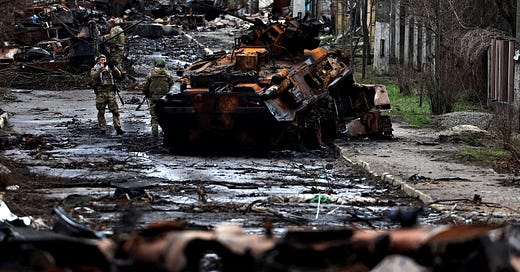Peace in Ukraine? A reminder about what is at stake for urban planners
Now into its fourth year, the Ukraine-Russia War has drawn global attention and concern from all corners - except from the urban planning community. Sure, a few folks have been vocal about the war and what is increasingly referred to as “urbicide” but as an Editor-in-Chief of one of the top journals in the field, I can assure you that practically no research is being submitted for publication on the topic. Most of us planning academics think our work has little to do with military conflict and I used to agree.

In the last several years, my thinking has shifted, and I am now resolute in my belief that urban planning is, actually, a project of military violence. This may sound hyperbolic or unnecessarily provocative, but my aim with a new paper I wrote is to convince planners, planning scholars, and planning educators that our work is, at the most fundamental level, an extension of military violence. This is not meant in any way to disparage the field of planning, but to illuminate a fact that is well understood by anyone who has lived through war. The ability of a planner to enforce a sign ordinance is grounded in power conveyed by a local government, through a state government, through a national government. That national government only has any such powers to grant because of tanks, artillery, and bombs.
Given the turmoil in Ukraine and in hot spots across the planet, I hope you will consider these ideas and grapple with them in your own practice, research, or teaching. When I was writing this paper, I spoke to one of my students about some of these concepts and she recoiled, sputtering: “I know, I know, I just don’t like to think about it.” I wholeheartedly disagree. We should all be fully aware of where our authority to plan derives from; such perspective can frame our work for the better.
Thanks for reading!
Best,
Justin
Hollander, Justin B. 2025. Urban planning as a project of national military violence in Ukraine and globally. Planning Practice & Research. https://www.tandfonline.com/doi/full/10.1080/02697459.2025.2472441


